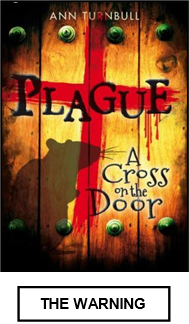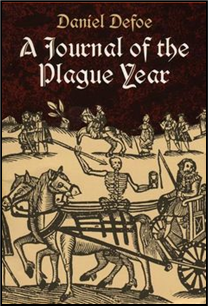


xxxxxAs we have seen, London had been hit by the Black Death in 1347 (E3) and, remaining endemic, had frequently returned, notably in 1593 and 1625. The plague of 1665 was the worst but, fortunately, the last. It began in 1664, but was at its height the following year, affecting in particular the poor and densely crowded areas. It is estimated that over 70,000 were killed out of a total population of 460,000. Many fled the capital, including the king and parliament, but a large number stayed on. Both the diarists, Samuel Pepys and John Evelyn, gave accounts of the disaster. It began to subside in 1666, and although it spread to other parts of the country, its effects were not so severe.
THE GREAT PLAGUE OF LONDON 1665 (C2)
Acknowledgement
Collecting the Dead: date and artist unknown.
 xxxxxLondon was no stranger to the plague. As we have seen, there was the Black Death of 1347 (E3) during which the capital, with its narrow streets and open sewers, was a hostage to fortune. And the plague, remaining endemic, was a frequent visitor over the next three centuries. In 1593, for example, an outbreak caused the closure of all theatres, and in 1625 a visitation killed some 40,000 men, women and children. The Great Plague was sadly the worst, but happily the last.
xxxxxLondon was no stranger to the plague. As we have seen, there was the Black Death of 1347 (E3) during which the capital, with its narrow streets and open sewers, was a hostage to fortune. And the plague, remaining endemic, was a frequent visitor over the next three centuries. In 1593, for example, an outbreak caused the closure of all theatres, and in 1625 a visitation killed some 40,000 men, women and children. The Great Plague was sadly the worst, but happily the last.
xxxxxIt began in late 1664 and was at its height during the summer of 1665. The number killed during the epidemic was probably over 70,000 out of a total population of some 460,000. It is thought to have begun in the suburb of Saint Giles-

xxxxxAs the outbreak worsened, parliament escaped to Oxford, and the king left London in June and did not return until the following February - s of the disaster -
s of the disaster -
xxxxxIncidentally, the English novelist Daniel Defoe wrote his Journal of the Plague Year in 1722, based on what people told him about the event. It provides a vivid description of this awful happening.
C2-


